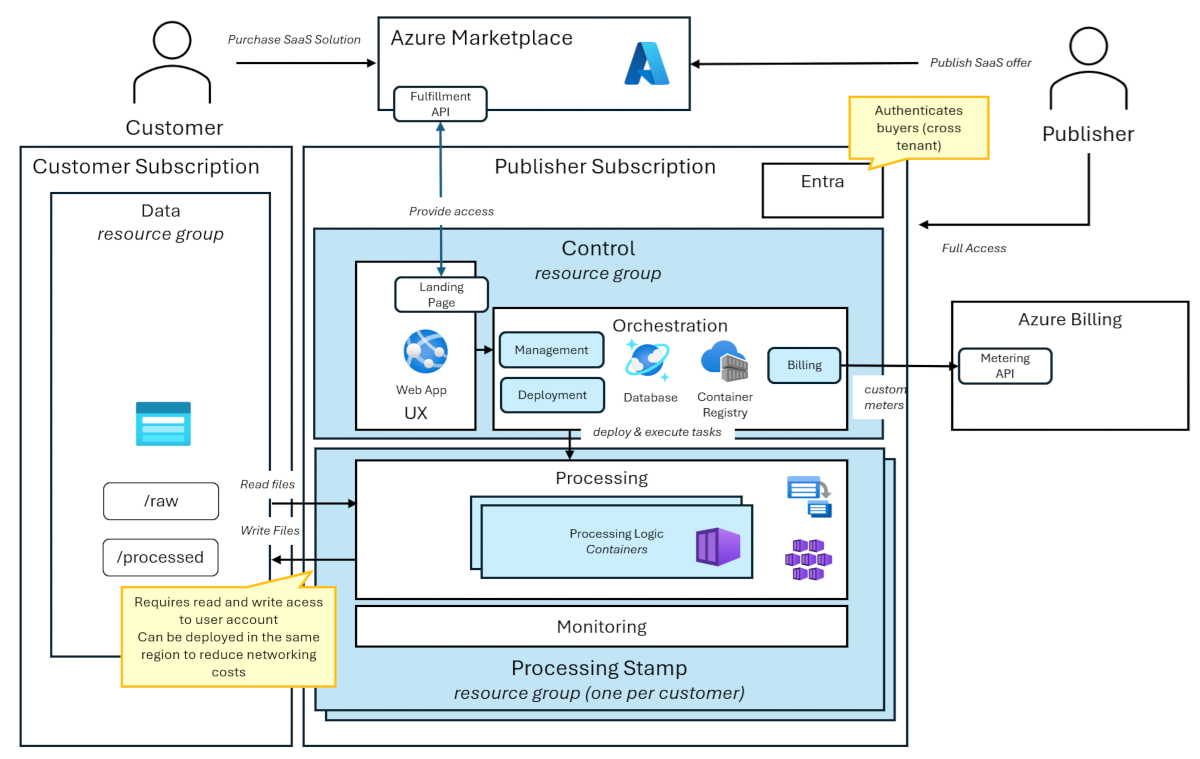Note
Access to this page requires authorization. You can try signing in or changing directories.
Access to this page requires authorization. You can try changing directories.
Consider an example of a SaaS solution deployed as a transactable offer through the Azure Marketplace. In this case, the control and processing are deployed in the publisher subscription.
The following steps explain the interactions between the various components in the Saas application architecture:
The customer purchases the solution through the Azure Marketplace.
The SaaS solution uses the fulfillment API to register the new customer.
The SaaS solution uses Entra to authenticate the users. The process requires a configuration that allows cross-tenant authentication.
The orchestration layer creates separate deployments of the processing logic for each customer. This way, you can easily give permissions to read and write customer resources and deploy them in the right region to save on networking costs.
The processing logic accesses the customer data, performs the relevant transformations, and writes the results back to the customer tenant.
To isolate data from one customer to another, you can use managed applications that are deployed internally. For example, you can have a dedicated deployment of the application run for every customer in the publisher tenant. This tenant belongs to a separate resource group that represents the processing stamp, as shown in the architecture diagram.
Next steps
Get started with the following article:
You can then refer to the following articles:
